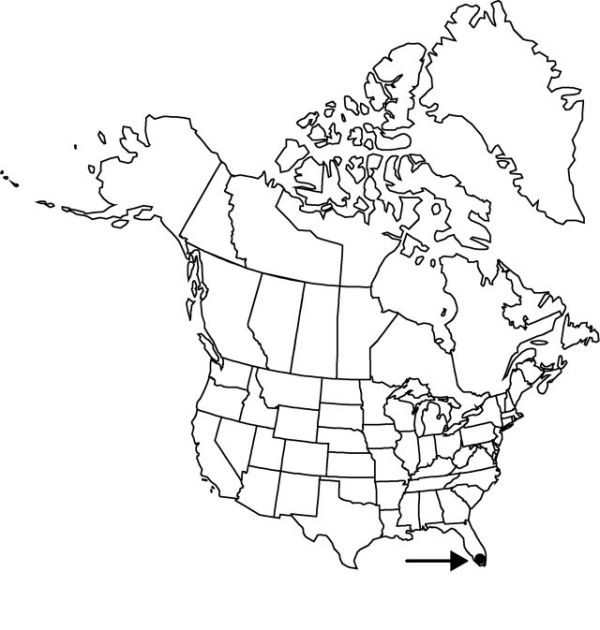Difference between revisions of "Maxillaria crassifolia"
Bonplandia (Hanover) 2: 16. 1854.
FNA>Volume Importer |
FNA>Volume Importer |
||
| Line 14: | Line 14: | ||
|name=Dicrypta baueri | |name=Dicrypta baueri | ||
|authority=Lindley | |authority=Lindley | ||
| − | }}{{Treatment/ID/Synonym | + | }} {{Treatment/ID/Synonym |
|name=Dicrypta crassifolia | |name=Dicrypta crassifolia | ||
|authority=(Lindley) Lindley ex Loudon | |authority=(Lindley) Lindley ex Loudon | ||
| − | }}{{Treatment/ID/Synonym | + | }} {{Treatment/ID/Synonym |
|name=Epidendrum sessile | |name=Epidendrum sessile | ||
|authority=Swartz | |authority=Swartz | ||
| − | }}{{Treatment/ID/Synonym | + | }} {{Treatment/ID/Synonym |
|name=Maxillaria sessilis | |name=Maxillaria sessilis | ||
|authority=(Swartz) Fawcett & Rendle | |authority=(Swartz) Fawcett & Rendle | ||
| Line 38: | Line 38: | ||
|elevation=0–10[–1300] m | |elevation=0–10[–1300] m | ||
|distribution=Fla.;Mexico;West Indies;Central America;South America. | |distribution=Fla.;Mexico;West Indies;Central America;South America. | ||
| − | |discussion=<p>Maxillaria crassifolia is self-pollinating in Florida. It occurs much more commonly in the rest of its range.</p> | + | |discussion=<p><i>Maxillaria crassifolia</i> is self-pollinating in Florida. It occurs much more commonly in the rest of its range.</p> |
|tables= | |tables= | ||
|references= | |references= | ||
| Line 62: | Line 62: | ||
|publication year=1854 | |publication year=1854 | ||
|special status= | |special status= | ||
| − | |source xml=https://jpend@bitbucket.org/aafc-mbb/fna-data-curation.git/src/ | + | |source xml=https://jpend@bitbucket.org/aafc-mbb/fna-data-curation.git/src/8f726806613d60c220dc4493de13607dd3150896/coarse_grained_fna_xml/V26/V26_1326.xml |
|subfamily=Orchidaceae subfam. Epidendroideae | |subfamily=Orchidaceae subfam. Epidendroideae | ||
|tribe=Orchidaceae tribe Maxillarieae | |tribe=Orchidaceae tribe Maxillarieae | ||
Revision as of 16:42, 18 September 2019
Plants epiphytic, cespitose, to 20 cm. Stems without pseudobulbs, or apparently so. Leaves 4–5 per shoot; blade linear-elliptic, 7–27 × 1.3–3 cm, leathery, apex unequally 2-lobed. Inflorescences several per leaf axil, successively borne and barely emerging, apparently supported on short, lateral rhizomes. Flowers yellow; sepals elliptic to ovate, 13–15 × 4–6 mm, apex acute, thickened; petals oblanceolate, 11–14 × 3–4 mm, apex acute; lip articulate with column foot, rhombic, 12–15 × 5–6 mm, lateral lobes inflexed toward column, constricted distal to middle; callus sticky, linear; column arching, cylindric, 9–10 mm, foot 1–2 mm. Capsules 2.5–3 cm.
Phenology: Flowering throughout year (fall–winter, Fla).
Habitat: Epiphytic
Elevation: 0–10[–1300] m
Distribution

Fla., Mexico, West Indies, Central America, South America.
Discussion
Maxillaria crassifolia is self-pollinating in Florida. It occurs much more commonly in the rest of its range.
Selected References
None.